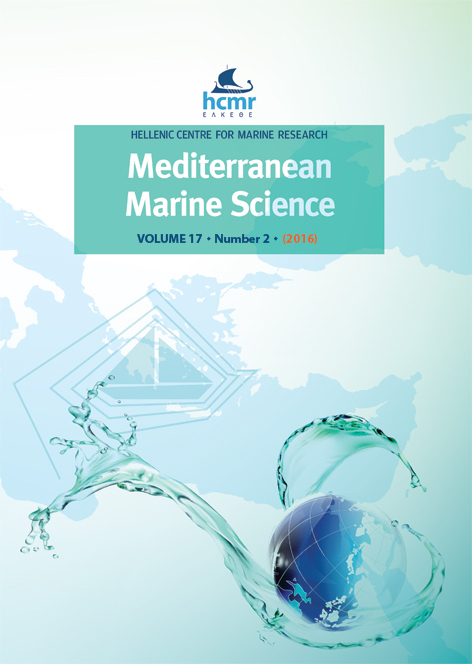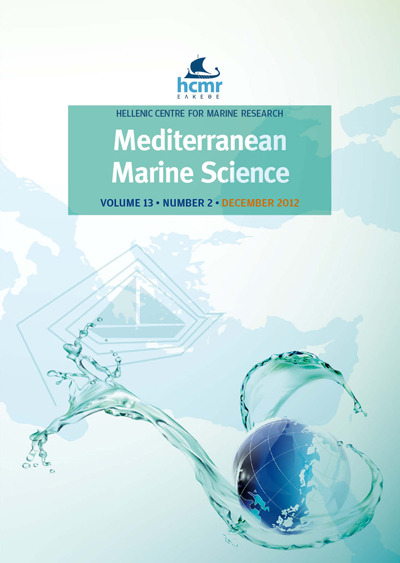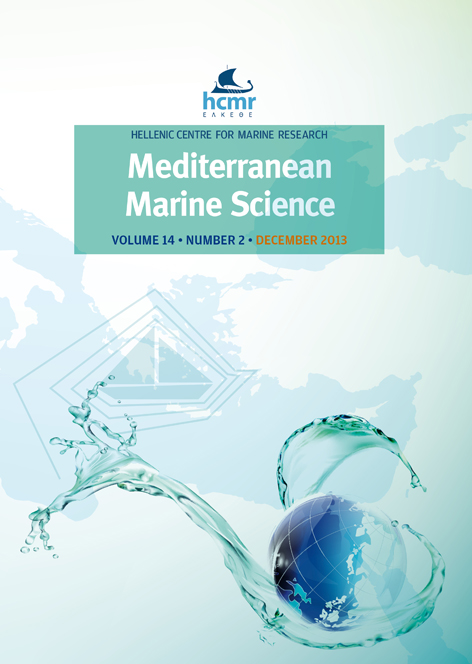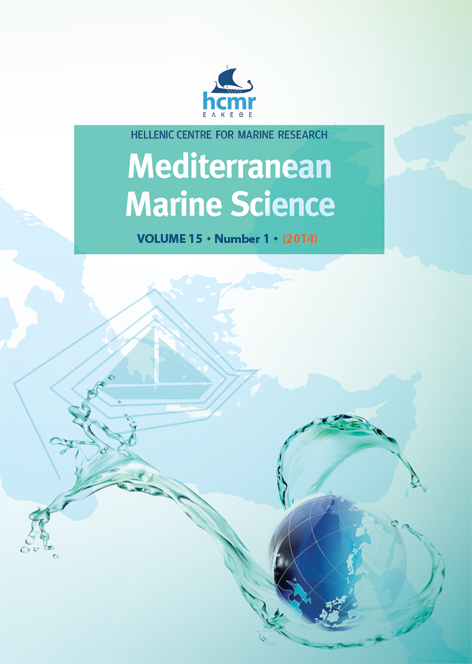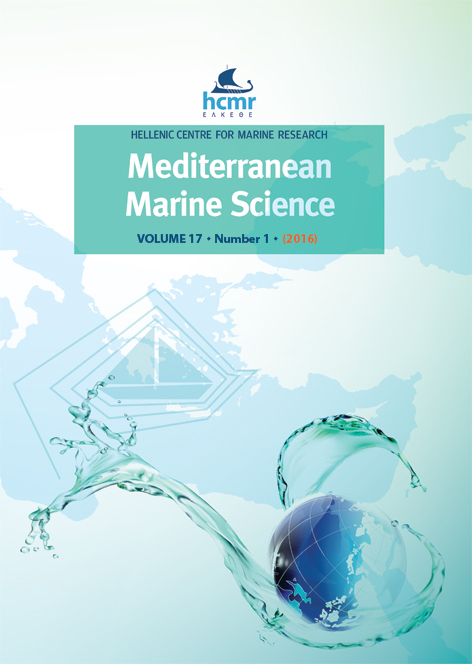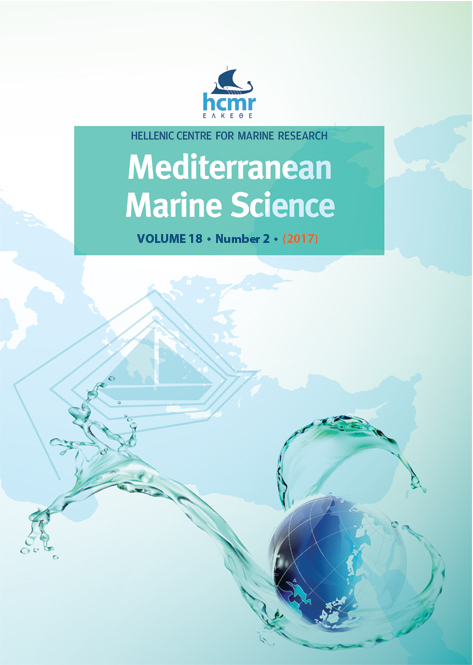New Mediterranean Biodiversity Records (July 2016)
Περίληψη
This contribution forms part of a series of collective articles published regularly in Mediterranean Marine Science that report on new biodiversity records from the Mediterranean basin. The current article presents 51 geographically distinct records for 21 taxa belonging to 6 Phyla, extending from the western Mediterranean to the Levantine. The new records, per country, are as follows: Spain: the cryptogenic
calcareous sponge Paraleucilla magna is reported from a new location in the Alicante region. Algeria: the rare Atlanto-Mediterranean bivalve Cardium indicum is reported from Annaba. Tunisia: new distribution records for the Indo-Pacific lionfish Pterois miles from
Zembra Island and Cape Bon. Italy: the ark clam Anadara transversa is reported from mussel cultures in the Gulf of Naples, while the amphipod Caprella scaura and the isopods Paracerceis sculpta and Paranthura japonica are reported as associated to the –also allochthonous–bryozoan Amathia verticillata in the Adriatic Sea; in the latter region, the cosmopolitan Atlantic tripletail Lobotes surinamensisis also reported, a rare finding for the Mediterranean. Slovenia: a new record of the non-indigenous nudibranch Polycera hedgpethi in the Adriatic. Greece: several new reports of the introduced scleractinian Oculina patagonica, the fangtooth moray Enchelycore anatina, the blunthead puffer Sphoeroides pachygaster (all Atlantic), and the lionfish Pterois miles (Indo-Pacific) suggest their ongoing establishment in the Aegean Sea; the deepest bathymetric record of the invasive alga Caulerpa cylindracea in the Mediterranean Sea is also registered in the Kyklades, at depths exceeding 70 m. Turkey: new distribution records for two non indigenous crustaceans, the blue crab Callinectes sapidus (Atlantic origin) and the moon crab Matuta victor (Indo-Pacific origin) from the Bay of Izmir and Antalya, respectively; in the latter region, the Red Sea goatfish Parupeneus forsskali, is also reported. Lebanon: an array of records of 5 alien and one native Mediterranean species is reported by citizen-scientists; the Pacific jellyfish Phyllorhiza punctata and the Indo-Pacific teleosteans Tylerius spinosissimus, Ostracion cubicus, and Lutjanus argentimaculatus are reported from the Lebanese coast, the latter notably being the second record for the species in the Mediterranean Sea since 1977; the native sand snake-eel Ophisurus serpens, rare in the eastern Mediterranean, is reported for the first time from Lebanon, this being its easternmost distribution range; finally, a substantial number of sightings of the lionfish Pterois miles further confirm the current establishment of this lessepsian species in the Levantine.
Λεπτομέρειες άρθρου
- Πώς να δημιουργήσετε Αναφορές
-
DAILIANIS, T., AKYOL, O., BABALI, N., BARICHE, M., CROCETTA, F., GEROVASILEIOU, V., CHANEM, R., GÖKOĞLU, M., HASIOTIS, T., IZQUIERDO-MUÑOZ, A., JULIAN, D., KATSANEVAKIS, S., LIPEZ, L., MANCINI, E., MYTILINEOU, C., OUNIFI BEN AMOR, K., ÖZGÜL, A., RAGKOUSIS, M., RUBIO-PORTILLO, E., SERVELLO, G., SINI, M., STAMOULI, C., STERIOTI, A., TEKER, S., TIRALONGO, F., & TRKOV, D. (2016). New Mediterranean Biodiversity Records (July 2016). Mediterranean Marine Science, 17(2), 608–626. https://doi.org/10.12681/mms.1734
- Τεύχος
- Τόμ. 17 Αρ. 2 (2016)
- Ενότητα
- Collective Article A
Authors who publish with this journal agree to the following terms:
- Authors retain copyright and grant the journal right of first publication with the work simultaneously licensed under a Creative Commons Attribution Non-Commercial License that allows others to share the work with an acknowledgement of the work's authorship and initial publication in this journal.
- Authors are able to enter into separate, additional contractual arrangements for the non-exclusive distribution of the journal's published version of the work (e.g. post it to an institutional repository or publish it in a book), with an acknowledgement of its initial publication in this journal.
- Authors are permitted and encouraged to post their work online (preferably in institutional repositories or on their website) prior to and during the submission process, as it can lead to productive exchanges, as well as earlier and greater citation of published work (See The Effect of Open Access).

